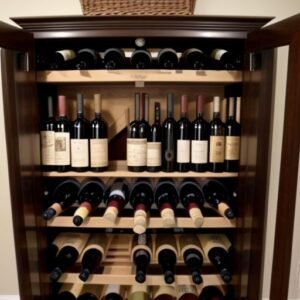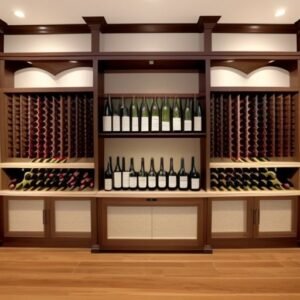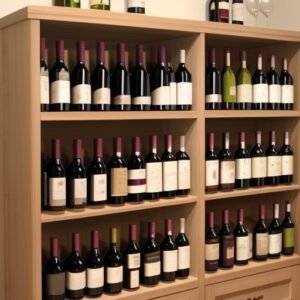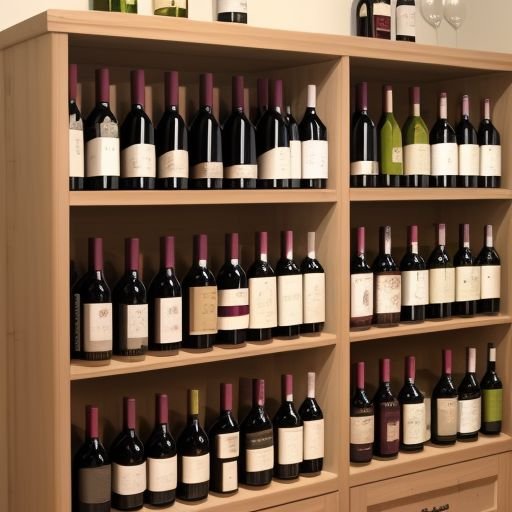The Fine Art of Educated Guess: Unearthing the Secrets of Wine Selection
Secrets of Wine Selection
Introduction:
Does anyone ever truly know what they’re doing when picking out a bottle of wine? Or is everyone just making an educated guess against potential nose-tweaking blunders or fresh fruit scents? Whether you’re perusing wines in an aisle in a supermarket or browsing the wine map in a fancy restaurant, the art of wine selection can oftentimes feel like an uphill battle. However, by understanding certain elements and applying a bit of intuitive know-how, you can turn your uneducated stabs in the dark into more precise, refined educated guesses.

Section 1: Demystifying the Art of Wine Selection
Tuning into the world of wine selection can initially appear overwhelming. However, just as art starts to make sense when you grasp the basics, wine selection too starts to come together once you understand certain factors that contribute to the taste profile of a wine.
Wine Terminology
- Variety: This is the type of grape used in making the wine. Popular varieties include Chardonnay, Sauvignon Blanc, and Merlot among others.
- Vintage: This is the year when the grapes were harvested. Vintage is essential as it can determine the quality of wine depending on the climatic conditions of that year.
- Body: Wines can be full, medium, or light-bodied. This typically relates to the grape variety and the alcohol content.

Navigating these terms can significantly enhance your educated guessing game when choosing a wine.
“Knowing your terminology can turn your wine selection from a wild guess to an educated one.”
Important Wine Characteristics
What should you look for in a wine when making an educated guess? Here are the main elements:
- Acidity: Wines with high acidity feel crisp and refreshing, while those with low acidity feel smoother and richer.
- Sweetness: Wines range from very sweet to dry. This is often the first thing you’ll notice when you taste a wine.
- Tannin: Tannins are naturally occurring compounds that add bitterness to a wine. They are often felt in the mouth as a drying sensation.
- Alcohol: The level of alcohol can range from around 5.5 percent to over 20 percent. Higher-alcohol wines typically feel warmer and bolder.
Section 2: Revealing the Secrets of a Wine Label
Faced with a wall of wine, decoding the label can be key to making an educated guess. Wine labels reveal a wealth of information about the bottle. Here are some elements you should pay attention to:

Geographic Origin
Where a wine comes from can tell you a great deal. This is because certain regions are known for specific wine types or qualities. For instance, wines from Bordeaux are primarily red blends, while those from Vouvray are white and made from Chenin Blanc.
The Producer
The name of the winery can reveal quite a bit. Established wineries have solid reputations, and they usually adhere to quality standards, guaranteeing you a decent bottle.
Vintage Year
As earlier mentioned, the vintage year can have a significant impact on quality. Some years are better for some regions and grapes than others.

Reading the label may sometimes feel like decoding hieroglyphs, but with practice, it will become second nature!
“Decoding a wine label provides you with clues that make the overwhelming wall of wine much more manageable. It’s like having cheat notes for your educated guesswork.”
Section 3: Trust your Palate
Lastly, remember that you are the one who will be drinking the wine. Therefore, wine selection ultimately boils down to personal taste. The more wines you taste, the more your palate gets to understand and appreciate different body types, wine regions, and grape varieties. Not all educated guesses need to be about the wine itself — sometimes, they’re about understanding your preference too.

Conclusion
Remember that wine selection doesn’t have to be intimidating, and you certainly don’t have to know everything there is to know about wine to enjoy it. Start with these basics, make your best-educated guess, and don’t forget to enjoy the journey. As the old saying goes, ‘The best way to learn about wine is to drink it.’ Here’s to confident educated guessing, and even more, to the adventure that is enjoying wine. (Secrets of Wine Selection)
Learn More- India’s Cultural Symphony: A Dive into the Splendid Unity and Diversity




